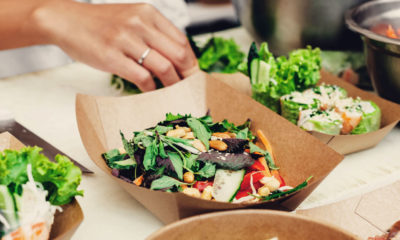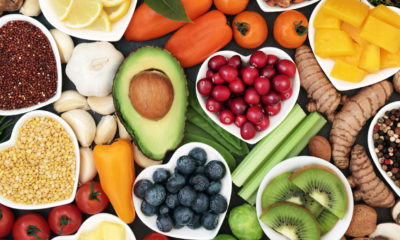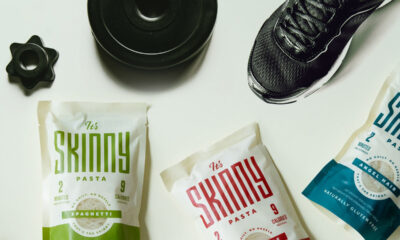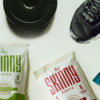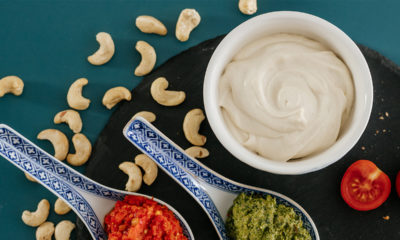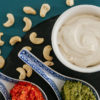Nutrition
6 Ways To Prevent Bloating
Some things in life just aren’t fair. You could be following a stellar workout regimen and a point-perfect diet but still end up being at war with your body, feeling fat, full, pushed out and gassy. The technical term: blurgh!
This cruel joke has the ability to unravel all your efforts and give your self-confidence a knock. Fortunately, there are several smart strategies you can use to prevent bloating and minimize this embarrassing set-back so you can feel trim and light again.
1. Put your diet under the microscope
Cookie-cutter diets could be the main culprit because these plans are often not tailored to your current weight or activity level, and your carb cycling may be over-exaggerated or your proteins might be through the roof, to mention just a few issues.
Use the common sense approach to prevent bloating and if there is too much of a particular food in your diet and you feel terrible after eating it, replace it with a worthy substitute. What works for someone else might not work for you.
2. Take stock of your fiber intake
Fibrous foods often cop the blame, yet fiber is extremely crucial to building up and maintaining the essential bacteria in your gut. If you’re eating too little or too much fiber, to a point where it extends past the daily-suggested amount of 25-35g, then you could suffer through an eruption of symptoms, known as a bacterial imbalance.
Beans, grains and legumes are an excellent source of B vitamins, selenium and potassium, but recent evidence also suggests they are fiber sources to be avoided if you want to beat the bloat, which is unfortunate given your body needs a proper balance of all nutritious whole foods. So, rather than avoiding them, try eating them in smaller doses because it’s often the foods you least expect that can be at fault.
For instance: raspberries might be great for people in training, since they’re low-sugar, low-carb and can kill a sweet tooth, but they’re also ripe with fiber – a whopping 8g per cup. Imagine how you’d feel if you dumped three times that amount into your power smoothie for a single serving. That quota is already at the daily cap so make a careful audit of your daily fiber intake to make sure it falls within recommended guidelines.
3. Cycle your carbs wisely
Carb cycling is an excellent tool to fight flab because it can rev up your metabolism – but this can come at a cost. The yo-yoing could be well beyond what your body deems acceptable for normal or proper stabilization, which could leave you feeling bloated.
A great example is someone who eats roughly 200g of carbs and then takes in 400g the next day. Your body isn’t accustomed to that regimen so it needs a more gradual approach, especially if your workout routine doesn’t require you to eat such a large volume of carbs until you’ve built up your strength to a more challenging level, before you take it down again to repeat your cycle. Granted, the idea of carb cycling is to challenge your metabolism, but that can make it go haywire and give you that pot-belly feeling.
4. Protein problems
If you can’t relate to any of the previous points, your problem might be your protein intake. You see, protein is broken down into amino acids by the hydrochloric acid in your stomach; and when there isn’t enough of that to go around, it won’t break it down completely and will have a tendency to ferment and putrefy.
Try eating your proteins first, so the stomach can act on them first, rather than any subsequent foods. You should also change up your protein powders because you might be intolerant to a particular type.
5. Weak muscles
If you’ve been neglecting your core then this could be a factor. Research in the New Zealand Medical Journal found that people who have gained weight and have weak abdominal muscles tend to suffer more from visible bloating than people with stronger cores.
This makes sense since stronger muscles act like a corset holding the bloating inside and forcing excess gas to follow its natural path. Stick to training your core several times a week, using at least three exercises in each session.
6. Watch your sweet tooth
That mid afternoon candy bar might seem innocuous but it could be playing a big role in your bloating. Research in Clinical Nutrition found that 72% of people who suffer from abdominal bloating, and too much wind, also had a problem absorbing certain sugars, like lactose, fructose or sorbitol; and 65% had symptoms of sugar intolerance.
In the same way you should cut out refined carbs, it’s important to see how you feel after a sugar binge to make sure it’s not a major cause of any swelling.
For more nutrition advice, sign up for the TRAIN for HER newsletter.







